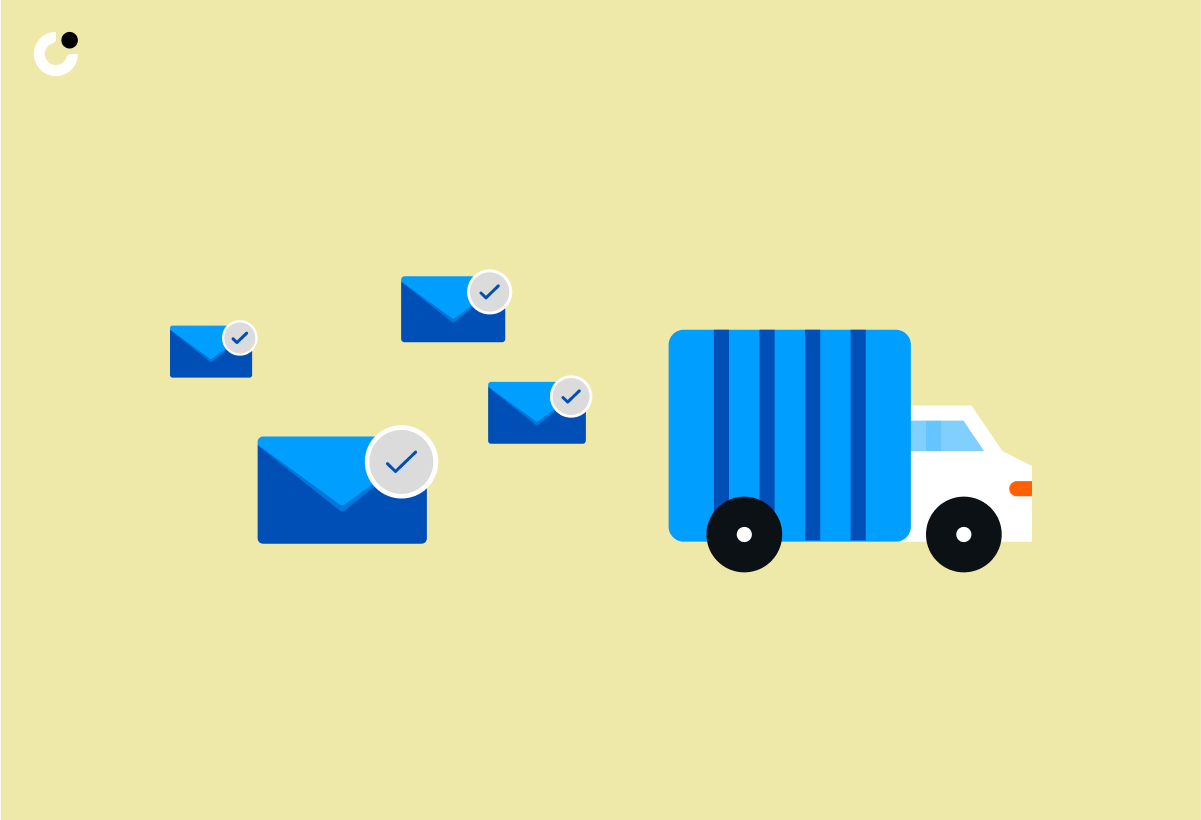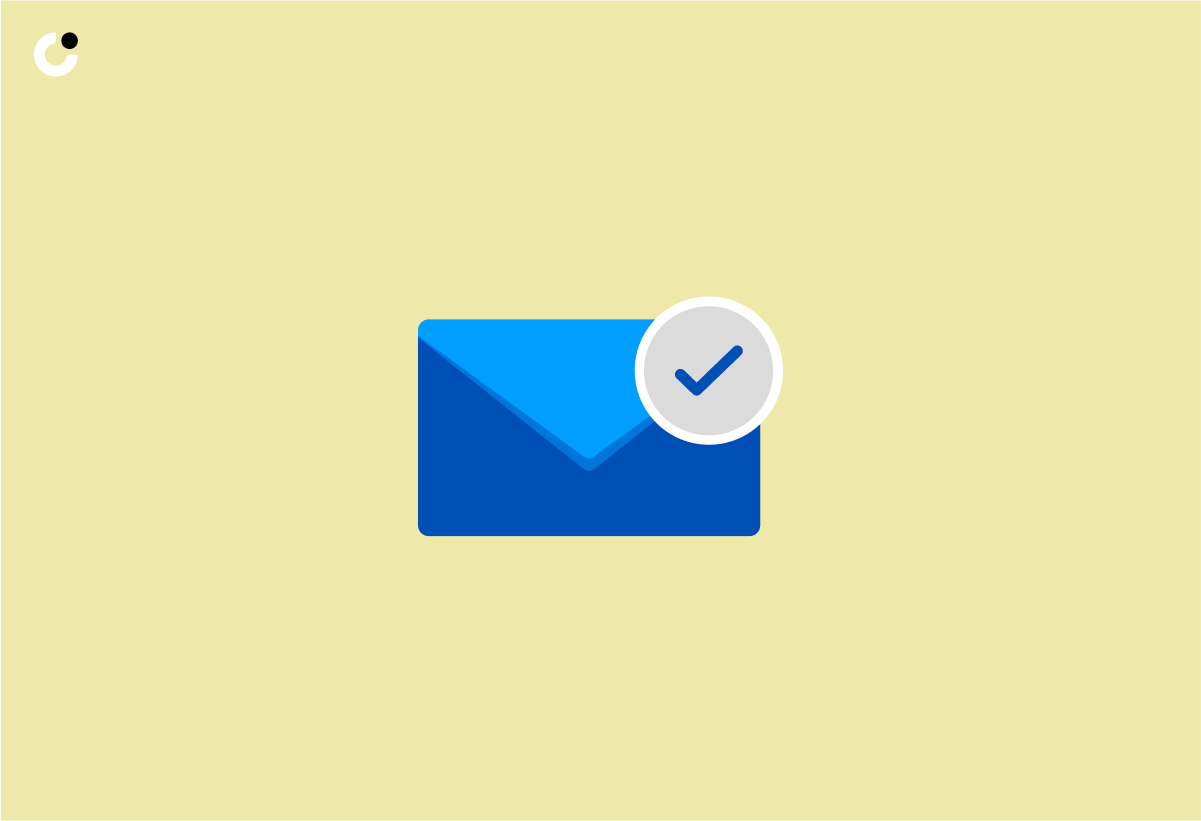In the world of outreach, cold email deliverability is often the key to success. Imagine spending hours crafting the perfect email, only to have it land in the dreaded spam folder, never to be seen by your intended recipient. Frustrating, right? That’s why understanding and optimizing cold email deliverability is essential for making sure your carefully crafted messages reach their intended inboxes, maximizing engagement and conversion rates. Are you ready to unlock the secrets of deliverability and supercharge your cold email campaigns? Let’s dive in!
Key Takeaways
- This guide explains the nuances of cold email deliverability and provides strategies for successful campaigns.
- Technical setup, content quality, and sender reputation are key factors affecting delivery rates.
- Following best practices such as domain management, list hygiene, sending volume & timing can improve deliverability and lead to increased engagement & conversion rates.
Understanding Cold Email Deliverability

Cold email deliverability is all about ensuring your emails land in the primary inbox rather than the spam folder, ultimately influencing engagement and conversion rates. This delicate dance involves navigating the differences between cold emails and email marketing, as well as mastering the factors that affect deliverability, such as technical setup, content quality, and sender reputation.
In this guide, we will delve into the subtleties of cold email deliverability, learning how to bypass the spam folder and successfully reach your recipient’s inbox.
The Importance of Deliverability

Deliverability plays a pivotal role in cold email success, as it dictates whether your meticulously crafted emails reach the main inbox or end up in the spam folder, directly impacting engagement and conversion rates. Understanding the factors influencing deliverability - including technical setup, content quality, and sender reputation - is key to achieving high deliverability rates and preventing your emails from being marked as spam.
Optimizing your call-to-action, encouraging engagement, leveraging a reliable email service provider, and avoiding excessive use of images, HTML, and attachments can all contribute to improving deliverability. Implementing these best practices will set you on the path to guarantee your cold email campaigns reach the correct inboxes, leading to the desired outcomes.
Cold Email vs. Email Marketing

Although both cold email and email marketing serve as powerful tools to connect with potential and existing customers, they differ in their goals, strategies, and approaches. Cold email focuses on initiating a dialogue and engaging with new prospects, while email marketing is directed towards nurturing relationships with existing customers, promoting products, or sharing company updates.
To succeed in cold emailing, it’s essential to craft plain-text messages that avoid spam trigger words and cater to the interests and needs of your target audience. On the contrary, email marketing campaigns often incorporate HTML and images and are managed and optimized using email marketing software. A well-crafted cold email template can make all the difference in achieving success in your outreach efforts.
Comprehending the distinct differences between these two approaches can aid in tailoring your strategies, maximizing the efficacy of your outreach endeavors.
Factors Affecting Cold Email Deliverability

Achieving high cold email deliverability rates is no easy feat, as it requires mastering a delicate balance of technical setup, content quality, and sender reputation. These three factors work in tandem to determine whether your emails reach the recipient’s inbox or end up in the spam folder, directly affecting the success of your campaigns.
We will now delve further into each of these factors, exploring ways to optimize them for increased deliverability rates.
Technical Setup

Establishing the proper technical setup is critical for building trust with email service providers and avoiding spam filters. One of the key components of this setup is the implementation of:
- SPF (Sender Policy Framework) records
- DKIM (DomainKeys Identified Mail) records
- DMARC (Domain-based Message Authentication, Reporting, and Conformance) records
These records help authenticate your emails from your email account and ensure their legitimacy through domain message authentication reporting.
DNS Manager, another essential element of the technical setup, plays a crucial role in managing these records and maintaining credibility with email service providers. By keeping track of DNS records and ensuring their consistency, you can significantly improve your deliverability rates.
Last but not least, choosing a reliable email provider is paramount for successful cold email deliverability. These providers offer various features and tools to help you manage your campaigns and monitor your send volume, ensuring that you stay within the limits set by the ESP and avoid being flagged as spam.
Investing in an appropriate technical setup lays the groundwork for successful cold email campaigns and high deliverability rates.
Content Quality

High-quality, personalized content is the backbone of any successful cold email campaign. To improve deliverability rates, it’s crucial to avoid excessive use of images and superfluous formatting, which can trigger spam filters and make your emails appear suspicious to ESPs. Additionally, steering clear of spammy language and ensuring that your emails don’t contain too many links can help dodge spam filters and improve your chances of reaching the recipient’s inbox.
Another critical factor that affects deliverability is hard bounces, which result from invalid email addresses. Regular verification of email addresses and removal of inactive subscribers or invalid addresses is necessary to minimize hard bounces and maintain a clean email list. This not only helps improve deliverability rates but also ensures that your emails are reaching an engaged audience.
In summary, focusing on content quality and avoiding common spam triggers can significantly boost your cold email deliverability. Crafting personalized, engaging emails that meet your target audience’s needs and interests can optimize your cold email campaigns’ effectiveness, leading to enhanced engagement and conversion rates.
Sender Reputation

Your sender reputation plays a pivotal role in determining whether your cold emails reach the recipient’s inbox or end up in the spam folder. To maintain a positive sender reputation and improve deliverability rates, it’s essential to keep your bounce rates low, minimize spam complaints, and follow consistent sending patterns.
One way to sustain a favorable sender reputation is by employing a dedicated IP address and monitoring your sender score.
Here are some key points to remember:
- A higher sender score implies a better reputation
- A lower score indicates a weaker reputation and can lead to decreased deliverability and engagement rates
- Monitoring your sender score and making necessary adjustments can help guarantee your cold emails reach their intended recipients.
Email warm-up services are another valuable resource for maintaining a positive sender reputation and improving deliverability rates. These services help simulate beneficial interactions, such as replies and email actions, to enhance your reputation as a sender and boost email deliverability. Investing in appropriate strategies and tools can aid in maintaining an excellent sender reputation, ensuring your cold emails reach the correct inboxes.
Best Practices for Improving Cold Email Deliverability

Implementing best practices for domain management, email list hygiene, and sending volume and timing can significantly improve your cold email deliverability rates. Taking time to optimize these crucial campaign aspects can help ensure your emails reach their intended recipients, leading to higher engagement and conversion rates.
We will now delve into these best practices in more detail, revealing how they can be applied to your cold email campaigns.
Domain Management

Using separate domains for your cold emails and warming them up can protect your main domain’s reputation and reduce the risk of blacklisting.
Here’s how you can do it:
- Establish secondary domains.
- Gradually increase the volume of emails sent from each domain.
- Build trust with email service providers.
- Safeguard your primary domain from potential deliverability issues.
Furthermore, using different sending addresses for each domain can yield improved cold email deliverability, as the number of emails sent per domain is reduced and the likelihood of spam contamination between sending addresses and domains is decreased.
Implementing these domain management strategies can help guarantee your cold emails reach the correct inboxes, while keeping your main domain safe.
Email List Hygiene

Regularly cleaning and updating your email list can boost deliverability and engagement rates. Here are some steps to maintain a clean email list:
- Verify email addresses to ensure they are valid and active.
- Remove inactive subscribers who have not engaged with your emails for a certain period of time.
- Segment your list based on engagement levels and other relevant factors. By following these steps, you can improve the effectiveness of your email marketing campaigns.
Selecting dependable sources when constructing your email list is also crucial for maintaining email list hygiene and reducing bounce rates. By employing a combination of reliable sources, regular list clean-up, and effective segmentation, you can ensure that your cold emails are reaching an engaged audience and enjoying optimal deliverability rates.
Sending Volume and Timing

Gradually increasing your sending volume, varying send times, and using automation tools can help avoid spam filters and maintain a positive sender reputation. Here are some tips to follow:
- Start with a low send volume, such as 10-20 emails per day, to build trust with email service providers and monitor deliverability and reputation.
- Adhere to the limits set by the provider when gradually increasing the volume.
- Vary your send times to avoid patterns that may trigger spam filters.
- Use automation tools to schedule and manage your email campaigns effectively.
By following these tips, you can improve your email deliverability and maintain a positive sender reputation.
Varying your send times can also help reduce the likelihood of being identified as suspicious, as consistent sending patterns can be a red flag for spam filters. Finally, utilizing email warm-up services like MailFlow can expedite the process of establishing credibility as a sender, often referred to as “warming up” an email address.
Adopting these volume and timing strategies can enhance your cold email deliverability, ensuring your campaigns reach their intended audience.
Tools and Resources for Monitoring and Enhancing Deliverability

Utilizing various tools and resources to monitor and enhance cold email deliverability can help ensure optimal inbox placement and engagement. From deliverability testing tools like Mail Tester to sender score monitoring and email warm-up services, these resources can provide valuable insights and support in optimizing your cold email campaigns.
We will now examine some of these vital tools and resources in more detail.
Deliverability Testing Tools

Deliverability testing tools like Mail Tester can help identify potential spam triggers and technical issues in your emails before sending, ensuring that your messages have the best chance of reaching their intended recipients. By evaluating your email content against known spam indicators and providing a score based on the likelihood of the email being marked as spam, Mail Tester can offer valuable insights into your email’s deliverability potential.
In addition to Mail Tester, there are several other deliverability testing tools available, such as:
Incorporating these tools into your cold email strategy enables proactive addressing of potential deliverability issues and campaign optimization for maximum inbox placement and engagement.
Sender Score Monitoring

Monitoring your Sender Score can provide valuable insights into your reputation as a sender and help identify areas for improvement. This metric, which is based on factors such as recipient engagement and spam reports, can significantly impact your cold email deliverability. A high Sender Score can enhance deliverability, while a low score can result in decreased deliverability and engagement rates.
Factors that influence your Sender Score include:
- Bounce rates
- Sender history
- Engagement
- Unsubscribe rates
- Spam complaints
- Spam traps
- Email sending volume and frequency
- User interaction
Monitoring your Sender Score and making the necessary adjustments can help ensure your cold emails reach their intended recipients, resulting in optimal deliverability rates.
Email Warm-up Services

Email warm-up services like MailReach can help establish trust with email service providers and improve deliverability rates. These services simulate beneficial interactions, such as replies and email actions, to enhance your sender reputation and boost email deliverability. The process involves:
- Sending emails from your account in a controlled and systematic manner
- Establishing a positive sender reputation with inbox providers
- Ensuring that your cold and mass emails are delivered to recipients’ inboxes instead of being labeled as spam.
Employing email warm-up services can provide several benefits, including:
- Enhancing your deliverability rates
- Increasing open rates
- Heightening credibility
- Improving outreach success
- Reducing the time and effort needed to build a positive sender reputation.
Incorporating these services into your cold email strategy can help ensure your campaigns reach their intended audience, resulting in optimal deliverability rates.
Legal Aspects and Compliance in Cold Emailing

Understanding legal aspects and compliance requirements in cold emailing is crucial to protect your business and maintain a positive sender reputation. Providing an easy opt-out option, such as an unsubscribe link, can help reduce the likelihood of emails being flagged as spam. Additionally, adhering to the General Data Protection Regulation (GDPR) requirements for cold emailing is essential. To ensure compliance, it is important to reach out only to those who can benefit from your product or service, clearly explain how you obtained someone’s email address, and provide an easy opt-out option for recipients to unsubscribe from future emails.
Failure to comply with anti-spam regulations in cold emailing can result in severe penalties. For instance, under the CAN-SPAM Act, penalties of up to $46,517 per email can be incurred. Understanding and adhering to these legal aspects and compliance requirements can protect your business and maintain a positive sender reputation, contributing to the success of your cold email campaigns.
Case Studies: Successful Cold Email Deliverability Strategies

Examining case studies of successful cold email deliverability strategies can provide valuable insights and inspiration for optimizing your own campaigns. For example, Company X conducted an A/B test and implemented the findings from the test, ultimately resulting in a doubling of their cold email results. Company Y, on the other hand, employed strategies such as personalizing the email, utilizing catchy subject lines, comprehending the recipient’s business and challenges, constructing relationships with prospective leads, and sending a succession of personalized emails with business-related information.
Studying these successful cold email strategies and incorporating their best practices into your campaigns can significantly improve your deliverability rates, leading to successful outreach efforts. Whether you’re just starting out with cold emailing or looking to fine-tune your existing campaigns, these case studies can provide valuable insights and guidance to help you reach your goals.
Summary
In conclusion, mastering cold email deliverability is crucial for successful outreach campaigns. By understanding the factors affecting deliverability, implementing best practices for domain management, email list hygiene, and sending volume and timing, and utilizing tools and resources to monitor and enhance deliverability, you can ensure that your carefully crafted emails reach the right inboxes and maximize engagement and conversion rates. The road to cold email success starts with optimizing deliverability - so seize the opportunity, implement these strategies, and watch your campaigns soar to new heights!
Frequently Asked Questions
What email deliverability is cold email?
Cold email deliverability should be at least 95% to ensure emails land in the prospect's main inbox, rather than their spam folder.
What is a good deliverability rate for cold email?
For successful cold email campaigns, it's important to maintain a deliverability rate of at least 95%, with the bounce rate staying under 5%. By ensuring personalized and valuable content, attractive subject lines, targeting the right people, and delivering at the right times, you can achieve a response rate from 1% to 10%.
How do I increase cold email deliverability?
To increase cold email deliverability, use cold email software instead of email marketing software, use a cold email domain, mix up sending times, check sender score, avoid open and click tracking, and personalize each email.
Is cold emailing illegal?
No, cold emailing is not illegal, provided businesses comply with relevant anti-spam laws and regulations. However, there are still risks to consider such as damaging a business's reputation or losing subscribers through marked spam or unsubscribing.
What is the difference between cold email and email marketing?
Cold email is used to initiate a dialogue and engage with new prospects, whereas email marketing is geared towards nurturing relationships with existing customers, promoting products, and sharing company updates.

